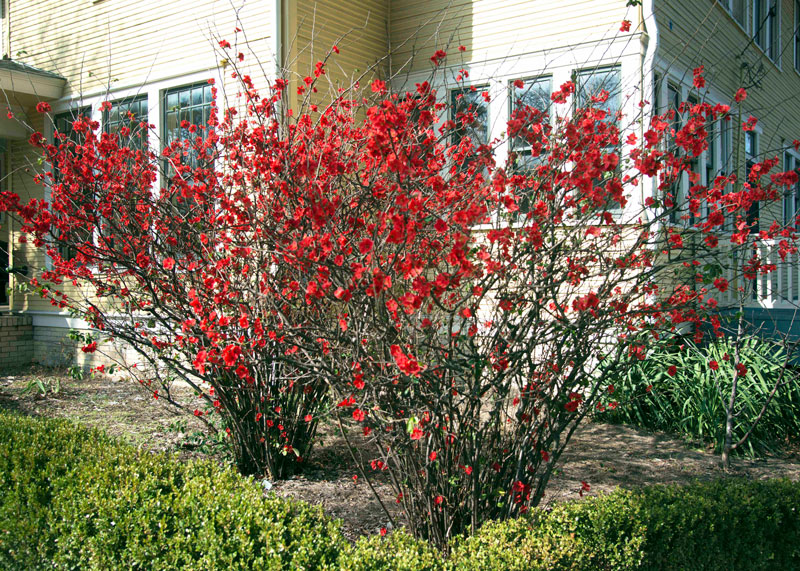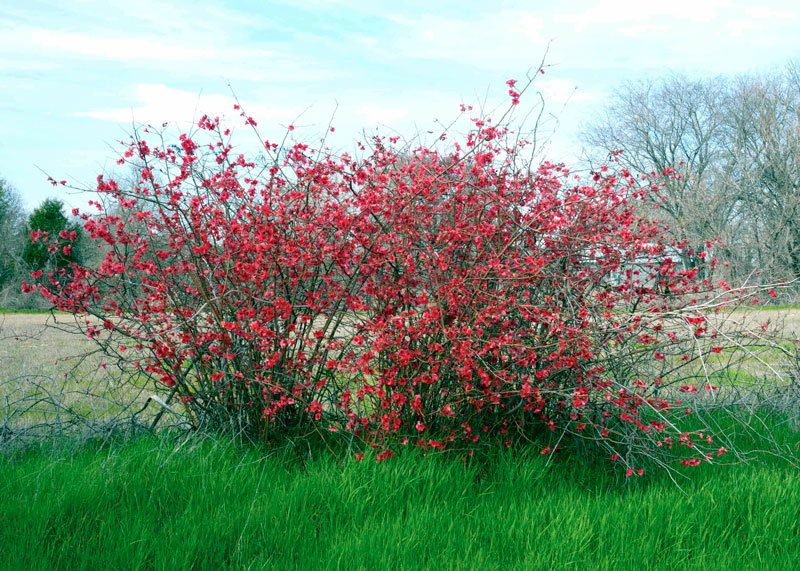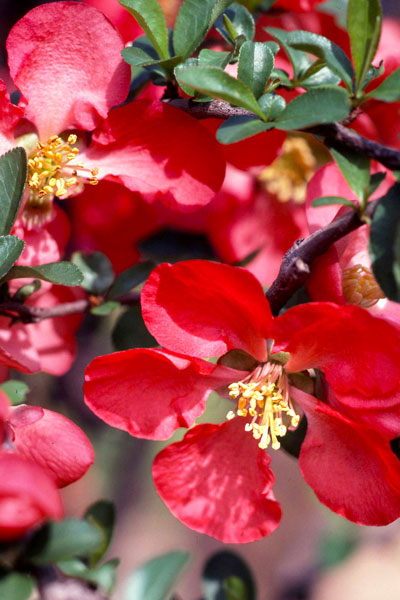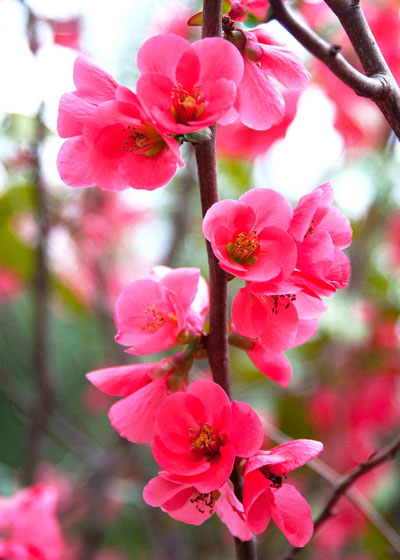Flowering Quinces – Horticultural Heirlooms
Flowering quince is an old friend that just hangs around waiting to hear its name called. It’s ready to go to work in any landscape, and its work year begins really early – with the first warm days of late winter.

Back “in the day,” this plant was easy to propagate. You just dug up sprouts from the mother clumps and transplanted them to another spot in your yard or another yard perhaps even in another town. And because new plants were so easily started, flowering quince found its way into thousands of old Texas landscapes 75, 100, and even more years ago.

Many of those plants are still out there performing their magic each spring, in many cases long after the houses and fences they attended have crumbled and fallen.

Flowering quince is akin to apples. You can see it in the flowers, and you can see it in the fruit. Even the leaves look very similar. But our quince plants are shrubs growing to 5 to 7 ft. tall and wide. Apples are 25-ft. trees.
One other important note about flowering quince: No plant is any prettier while it’s in bloom, but when it’s not blooming, it’s, well, it’s ugly. Plant it in the “out back.” Out back by the fence. Or out back in the alley. Position it so you can see it while it’s in bloom and so it can meld into the rest of your shrubs when it’s not.
What you’ll want to know…
Common name: Flowering quince
Scientific name: Chaenomeles speciosa
Plant family: Rosaceae (Rose Family)
Native home: China, Tibet, Myanmar
USDA Plant Hardiness Zones: 4-8
Sun/Shade: Full sun to afternoon shade
Bloom time in Texas: January and February
Flowers: Single or double, shades of red, rose-red, orange, pink, salmon, white
Leaves: Glossy dark green, deciduous

Stems: Brown with thorns, attractive in late-winter flower arrangements
Fruit: Resemble apples, edible (in jellies), but not the fruit you see in groceries
Cultivars (Cultivated varieties): There are many, as one might expect from a shrub that’s been grown in American gardens for so many decades. Look for the ‘Storm’ series, ‘Double Take’ series, ‘Jet Stream,’ ‘Cameo,’ and the many others. Check labels before purchasing, however, for mature height.
The mid-sized and taller types have been more successful in my garden than the dwarf types. That may or may not prove true in your plantings.
Note: This shrub is not commonly seen in most retail nurseries except during late-winter flowering season. If you’re looking for one, ask your favorite local nursery if they will be offering it (or can order it for you). But buy it as soon as you see it. It is definitely an impulse sales item when it’s in bloom!
